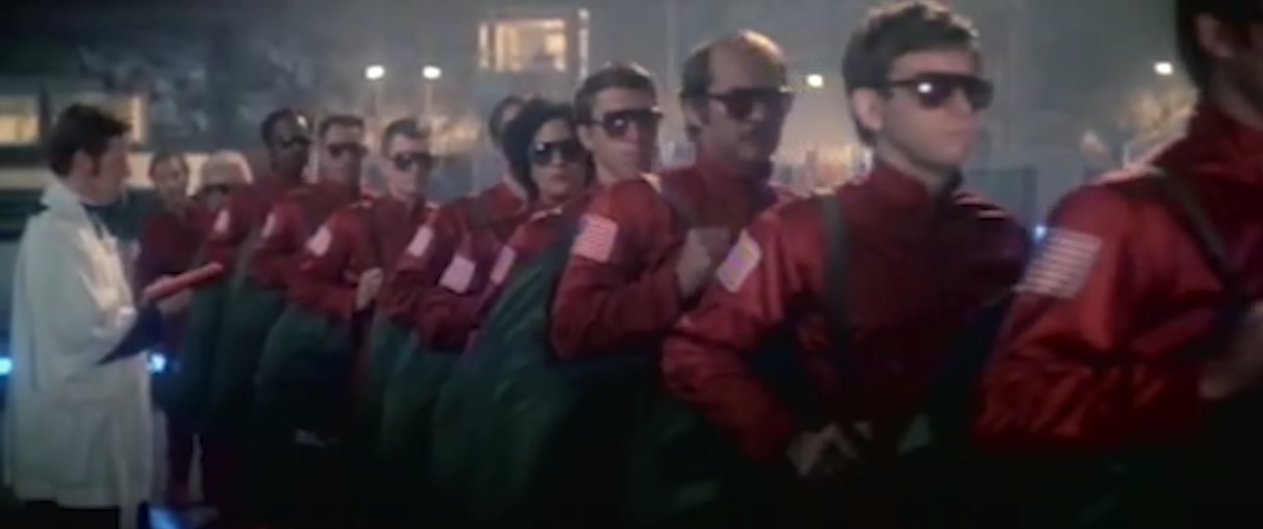The science fiction genre, particularly films centered around extraterrestrial life, has always held a fascination for audiences worldwide. In the 1970s and 1980s, this genre experienced a significant evolution, catalyzed by groundbreaking technological advancements, socio-political influences, and creative innovations. The alien-themed films from these decades have left an indelible mark on popular culture, influencing generations of filmmakers and viewers.
Setting the Stage: Sociopolitical Climate and Film Industry Changes
Understanding the landscape of alien films in the 70s and 80s necessitates an awareness of the prevailing sociopolitical climate. Post the moon landing in 1969, space was no longer an abstract concept, but a tangible frontier, inspiring an increasing number of films to explore the possibilities of what might lurk beyond our planet.
The 70s and 80s also saw the New Hollywood movement, where young filmmakers with fresh ideas, unafraid of pushing boundaries, revolutionized the film industry. Directors like Steven Spielberg and George Lucas emerged during this period, known for their creative storytelling and technical innovation, particularly within the science fiction genre.
Alien Encounters in the Early 70s: Exploration and Diplomacy
‘Close Encounters of the Third Kind’ (1977)
The 1977 film ‘Close Encounters of the Third Kind,’ directed by the renowned Steven Spielberg, revolutionized the alien movie genre with its unique and engaging approach. Unlike its predecessors that often depicted aliens as malevolent invaders seeking to destroy humanity, Spielberg’s masterpiece introduced a fresh perspective – aliens as explorers in search of communication and understanding. This theme of exploration and diplomacy resonated strongly with audiences, emphasizing the importance of open-mindedness and acceptance of the unknown.
Key Themes Explored:
- Communication and Understanding: At the heart of ‘Close Encounters of the Third Kind’ lies the essential theme of communication and understanding between different species. Spielberg boldly chose to portray aliens not as mindless aggressors but as beings capable of forming connections with humans. The film’s iconic five-tone musical motif became the epitome of this universal language of music. The aliens used this unique form of communication to reach out to humanity, transcending language barriers and conveying their message of peaceful intent;
| Key Aspect | Description |
|---|---|
| Musical Language | The five-tone musical motif becomes the key mode of communication between the aliens and humans. The haunting melody serves as a bridge between the two species, inviting curiosity and fostering understanding. |
| Unity Through Music | Spielberg’s portrayal of music as a unifying force illustrates that communication can transcend language and cultural differences, leading to a shared understanding of one another. |
- Obsession and Discovery: The protagonist, Roy Neary, played by Richard Dreyfuss, undergoes a profound transformation throughout the movie. His initial encounter with the alien spacecraft leaves him obsessed with a peculiar, mountain-like shape etched in his mind. This obsession reflects humanity’s relentless pursuit of discovery and the desire to comprehend the unknown, even at great personal cost;
| Key Aspect | Description |
|---|---|
| Pursuit of the Unknown | Roy’s obsession symbolizes mankind’s insatiable curiosity about the mysteries of the universe. It highlights the human drive to explore and understand the vastness of the cosmos, even when it challenges our everyday lives. |
| Personal Sacrifice | Roy’s journey is one of sacrifice and self-discovery. He must let go of his comfortable life and societal norms to embark on an extraordinary adventure, showcasing the sacrifices made in the pursuit of knowledge and understanding. |
- Coexistence: ‘Close Encounters of the Third Kind’ subtly addresses the concept of coexistence between humans and aliens. Instead of fear and hostility, the movie encourages an attitude of acceptance and openness to the unknown, presenting a vision of a future where peaceful cohabitation with extraterrestrial beings is possible.
| Key Aspect | Description |
|---|---|
| Overcoming Fear | The film challenges the common trope of alien invasion, advocating for an alternative perspective where fear is replaced by curiosity and empathy, fostering a sense of wonder and excitement about the unknown. |
| Embracing Differences | By portraying aliens as explorers seeking peaceful interaction, the movie emphasizes the value of embracing diversity and the benefits that can arise from understanding beings different from ourselves. |
‘Star Wars: A New Hope’ (1977)

In 1977, George Lucas gifted the world with ‘Star Wars: A New Hope,’ a groundbreaking film that revolutionized the representation of aliens on the big screen. Far beyond mere creatures with prosthetic makeup, the movie’s galaxy thrived with a rich tapestry of alien species, each unique in culture, language, and appearance. This cosmic diversity became a central theme, emphasizing the boundless possibilities of life in the universe.
Key Themes Explored:
- Interstellar Politics: ‘Star Wars: A New Hope’ introduces a galaxy embroiled in interstellar politics, epitomized by the conflict between the Rebel Alliance and the tyrannical Galactic Empire. The film provides a glimpse into the complexities of a multi-species universe, where different civilizations navigate their interests, ideologies, and alliances;
| Key Aspect | Description |
|---|---|
| Rebellion against Tyranny | The Rebel Alliance’s struggle represents the fight against oppressive regimes, showcasing a universal theme of resistance to injustice and the desire for freedom, resonating with audiences across cultures and generations. |
| Diplomacy and Negotiations | Throughout the saga, diplomatic relations between various alien species play a crucial role in shaping the narrative. This portrayal underscores the importance of dialogue and cooperation in resolving conflicts on a galactic scale. |
- The Hero’s Journey: At its core, ‘Star Wars: A New Hope’ is a timeless depiction of the Hero’s Journey, a narrative archetype famously studied by Joseph Campbell. Young Luke Skywalker, an ordinary farm boy, sets out on an extraordinary adventure that leads to self-discovery, growth, and transformation, culminating in his pivotal role in the battle against the forces of darkness;
| Key Aspect | Description |
|---|---|
| The Call to Adventure | Luke’s encounter with the message from Princess Leia sparks his journey, representing the initial step of the Hero’s Journey, where the protagonist is beckoned into the unknown, setting the stage for a transformative quest. |
| Mentorship and Guidance | The wise mentor, Obi-Wan Kenobi, plays a crucial role in guiding Luke along his path, imparting wisdom and nurturing his latent abilities. This mentor-mentee dynamic reflects the importance of guidance in personal growth and development. |
| Confronting the Dark Side | The hero’s confrontation with the Dark Side, embodied by Darth Vader, serves as a pivotal moment in his journey, representing the internal struggle between good and evil and the eventual triumph of hope and light. |
- Coexistence and Alliances: One of the most captivating aspects of ‘Star Wars: A New Hope’ is its portrayal of coexistence and alliances among a vast array of alien species. Despite their physical and cultural differences, many of these beings work together, showcasing the film’s underlying theme of unity amidst diversity.
| Key Aspect | Description |
|---|---|
| Multicultural Universe | The film’s galactic setting embraces an assortment of alien species, each contributing their unique skills and perspectives to achieve common goals. This portrayal celebrates the beauty of diversity and the strength it brings to alliances. |
| Teamwork and Collaboration | Throughout the movie, characters from various species form cohesive teams, reinforcing the idea that cooperation and understanding are essential to overcoming adversity and achieving shared objectives. |
Late 70s and Early 80s: An Interplay of Horror and Action
The late 70s and early 80s were a transformative period for alien movies, as filmmakers began to explore new dimensions in storytelling, blending horror, action, and science fiction. Two iconic films, Ridley Scott’s ‘Alien’ (1979) and Steven Spielberg’s ‘E.T. the Extra-Terrestrial’ (1982), stand as prime examples of this interplay. Each movie offered a unique and engaging perspective on the interaction between humans and extraterrestrial beings, leaving a lasting impact on the genre.
‘Alien’ (1979): A Terrifying Blend of Horror and Sci-Fi
Ridley Scott’s ‘Alien’ broke new ground by seamlessly merging horror and science fiction elements. The film introduced audiences to a menacing extraterrestrial creature of terrifying intelligence and deadly purpose. This thrilling combination of genres expanded the thematic potential of alien movies, revealing how alien life forms might interact with humans in chilling and unexpected ways.
Key Themes Explored:
- Survival and Isolation: ‘Alien’ encapsulates the primal fear of being hunted, amplified by the cold and isolated confines of space. The crew of the Nostromo find themselves trapped with a relentless and unknown adversary, accentuating the vulnerability of human beings in an unfamiliar and hostile environment;
| Key Aspect | Description |
|---|---|
| Perilous Hunt | The film heightens suspense by depicting the alien’s stealthy pursuit of the crew members, instilling a sense of terror and helplessness as they struggle to survive against an implacable and formidable foe. |
| Claustrophobic Setting | The claustrophobic interior of the spaceship adds to the feeling of isolation, intensifying the crew’s sense of confinement and the lurking danger they face, mirroring the innate fear of the unknown in the vastness of space. |
- Otherness and the Unknown: The alien creature in ‘Alien’ is a perfect embodiment of the unknown and the incomprehensible. With its non-humanoid appearance and inscrutable motives, the creature epitomizes humanity’s simultaneous fear and fascination with that which lies beyond our understanding;
| Key Aspect | Description |
|---|---|
| Alien Aberration | The alien’s distinctly non-humanoid design challenges conventional expectations of extraterrestrial life, presenting an entity that defies our preconceptions and taps into our primal fears of the unfamiliar. |
| Enigmatic Motives | The creature’s motives remain shrouded in mystery throughout the film, leaving audiences in suspense and uncertainty about its true intentions, amplifying the sense of dread and unpredictability. |
- Corporate Exploitation: ‘Alien’ delves into the theme of corporate exploitation, exemplified by the Weyland-Yutani Corporation’s ruthless pursuit of harnessing the alien as a weapon. The corporation’s callous disregard for human lives underscores the dangers of corporate greed and the potential consequences of unbridled ambition.
| Key Aspect | Description |
| Profit Over Humanity | The Weyland-Yutani Corporation’s focus on the alien as a means of profit disregards the human cost, illustrating the nefarious consequences when corporations prioritize their agendas over the well-being of individuals. |
| Ethical Dilemmas | The movie confronts moral and ethical dilemmas as the crew members must grapple with the corporation’s ulterior motives, raising questions about the potential consequences of unscrupulous actions in the pursuit of power and wealth. |
‘E.T. the Extra-Terrestrial’ (1982): An Innocent Bond of Friendship
Steven Spielberg’s ‘E.T. the Extra-Terrestrial’ presented a stark contrast to the horror-centric alien narratives of the time. The film offered a heartwarming portrayal of an innocent and friendly extraterrestrial creature stranded on Earth, forming an unforgettable bond with a young boy. It celebrated the innocence and acceptance often found in childhood friendships while exploring the themes of empathy and government intervention.
Key Themes Explored:
- Innocence and Friendship: ‘E.T. the Extra-Terrestrial’ revolves around the heartfelt relationship between E.T. and Elliot, the young boy who discovers and befriends the stranded alien. The film beautifully captures the pure and unadulterated innocence found in childhood friendships, where curiosity and acceptance transcend boundaries;
| Key Aspect | Description |
|---|---|
| Childlike Wonder | The movie evokes a sense of childlike wonder as Elliot and E.T. explore their newfound connection, reminding audiences of the simplicity and purity of childhood relationships. |
| Cross-Species Bond | The extraordinary friendship between Elliot and E.T. demonstrates that connections can transcend species, emphasizing the universal capacity for empathy and compassion. |
- Empathy: The film emphasizes the power of empathy, showcasing how humans can overcome initial fear and misunderstanding to help an alien return home. This theme resonates with the idea of understanding and embracing differences, promoting empathy as a crucial aspect of human relationships;
| Key Aspect | Description |
|---|---|
| Overcoming Fear | The movie portrays the gradual transformation of fear into empathy as Elliot and others learn to understand and relate to E.T., highlighting the potential for compassion to bridge gaps between beings. |
| Compassionate Actions | Through the characters’ actions, ‘E.T. the Extra-Terrestrial’ demonstrates the importance of showing empathy through helping others in times of need, exemplifying the impact of simple acts of kindness. |
- Government Intervention: Spielberg’s film subtly critiques government authorities, portraying them as faceless entities driven by their interests in studying E.T. solely as an object rather than recognizing him as a sentient being with feelings and emotions.
| Key Aspect | Description |
|---|---|
| Faceless Bureaucracy | The government agents’ anonymity and impersonal approach underscore the dehumanizing consequences of bureaucratic systems, raising questions about the importance of recognizing the humanity in all beings, regardless of their origins. |
| Emotional Disconnect | The film contrasts the government’s lack of empathy with the heartfelt connections formed by individuals like Elliot and his friends, illustrating the consequences of emotional disconnection in understanding others’ perspectives. |
Late 80s: Evolution and Expansion of the Genre

‘Predator’ (1987)
‘Predator’ introduced audiences to a high-stakes game between a group of soldiers and an alien hunter. It expanded the genre by seamlessly blending action and science fiction, portraying an extraterrestrial creature not as a monster, but an intelligent adversary.
Key Themes Explored:
| Topic | Description |
|---|---|
| Movie Title | Survival of the Fittest |
| Synopsis | The movie echoes Darwinian principles, with the Predator hunting for sport, selecting its prey based on their threat level or ‘fitness’. |
| Technology and Hunting | The Predator’s advanced technology further elevates it from a typical monster to an intelligent, formidable antagonist. |
| War and Consequences | By setting the film amidst a guerrilla warfare operation, it comments on the nature and consequences of war, further complicated by the alien threat. |
‘They Live’ (1988)
John Carpenter’s ‘They Live’ used extraterrestrials to critique societal issues, particularly consumerism and conformity, adding a satirical edge to the genre.
Key Themes Explored:
- Societal Control and Consumerism: The aliens control society through subliminal messages in media and advertising, symbolizing the dangers of consumerism and unchecked capitalism;
- Class and Inequality: The protagonist, a homeless drifter, discovers the aliens’ influence, revealing the movie’s commentary on class disparity and economic inequality;
- Resistance and Rebellion: The film showcases resistance against the alien-controlled status quo, symbolizing the power and necessity of rebellion in the face of oppressive forces.
Conclusion
The exploration of extraterrestrial life in 70s and 80s cinema has undeniably shaped our cultural understanding and expectations of what might exist beyond our planet. These films’ impact continues to be felt, as they remain
FAQ
The moon landing, sociopolitical climate, and the rise of young filmmakers through the New Hollywood movement were crucial influences on the alien films of this era.
The portrayal of aliens shifted from being solely monsters or invaders to a broader range including peaceful explorers, complex political entities, terrifying creatures, benevolent friends, intelligent hunters, and societal manipulators.
Themes such as communication, coexistence, survival, otherness, corporate exploitation, innocence, friendship, empathy, societal control, and resistance were commonly explored.




